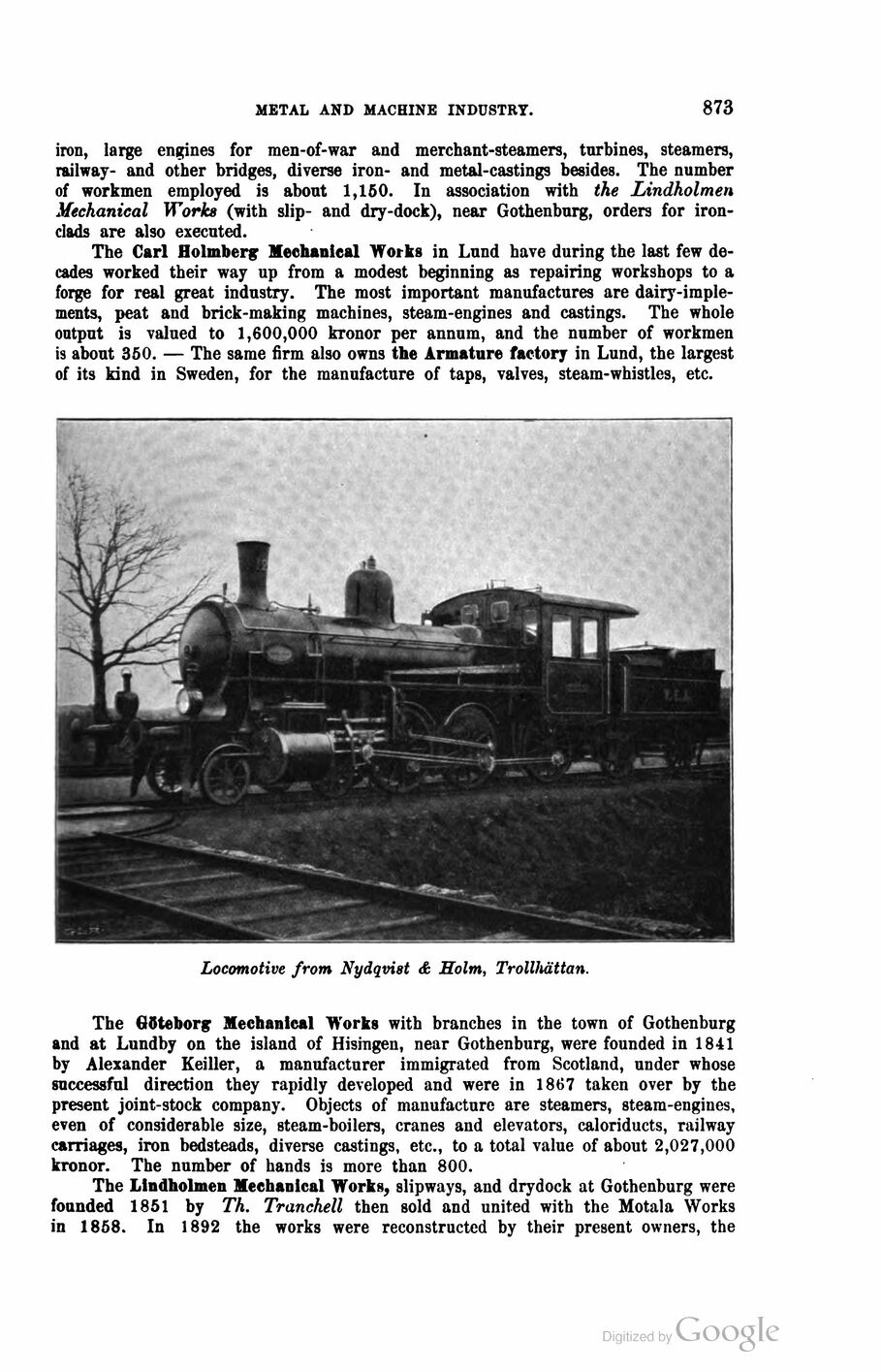
Full resolution (JPEG) - On this page / på denna sida - Second part - X. Manufacturing Industries. By Å. G. Ekstrand, Ph. D., Chief Engineer, Control Office of the Department of Finance - 10. Metal and Machine Industry, by Lector U. R. Ekstrand, Ph. D., Chalmers' Polytechnical College, Gothenburg

<< prev. page << föreg. sida << >> nästa sida >> next page >>
Below is the raw OCR text
from the above scanned image.
Do you see an error? Proofread the page now!
Här nedan syns maskintolkade texten från faksimilbilden ovan.
Ser du något fel? Korrekturläs sidan nu!
This page has never been proofread. / Denna sida har aldrig korrekturlästs.
metal and machine industry.
873
iron, large engines for men-of-war and merchant-steamers, turbines, steamers,
railway- and other bridges, diverse iron- and metal-castings besides. The number
of workmen employed is about 1,150. In association with the Lindholmen
Mechanical Works (with slip- and dry-dock), near Gothenburg, orders for
ironclads are also executed.
The Carl Holmberg Mechanical Works in Lund have during the last few
decades worked their way up from a modest beginning as repairing workshops to a
forge for real great industry. The most important manufactures are
dairy-implements, peat and brick-making machines, steam-engines and castings. The whole
output is valued to 1,600,000 kronor per annum, and the number of workmen
is about 350. — The same firm also owns the Armature factory in Lund, the largest
of its kind in Sweden, for the manufacture of taps, valves, steam-whistles, etc.
Locomotive from Nydqvist & Holm, Trollhättan.
The GOteborg Mechanical Works with branches in the town of Gothenburg
and at Lundby on the island of Hisingen, near Gothenburg, were founded in 1841
by Alexander Keiller, a manufacturer immigrated from Scotland, under whose
successful direction they rapidly developed and were in 1867 taken over by the
present joint-stock company. Objects of manufacture are steamers, steam-engines,
even of considerable size, steam-boilers, cranes and elevators, caloriducts, railway
carriages, iron bedsteads, diverse castings, etc., to a total value of about 2,027,000
kronor. The number of hands is more than 800.
The Lindholmen Mechanical Works, slipways, and drydock at Gothenburg were
founded 1851 by Th. Tranchell then sold and united with the Motala Works
in 1858. In 1892 the works were reconstructed by their present owners, the
<< prev. page << föreg. sida << >> nästa sida >> next page >>